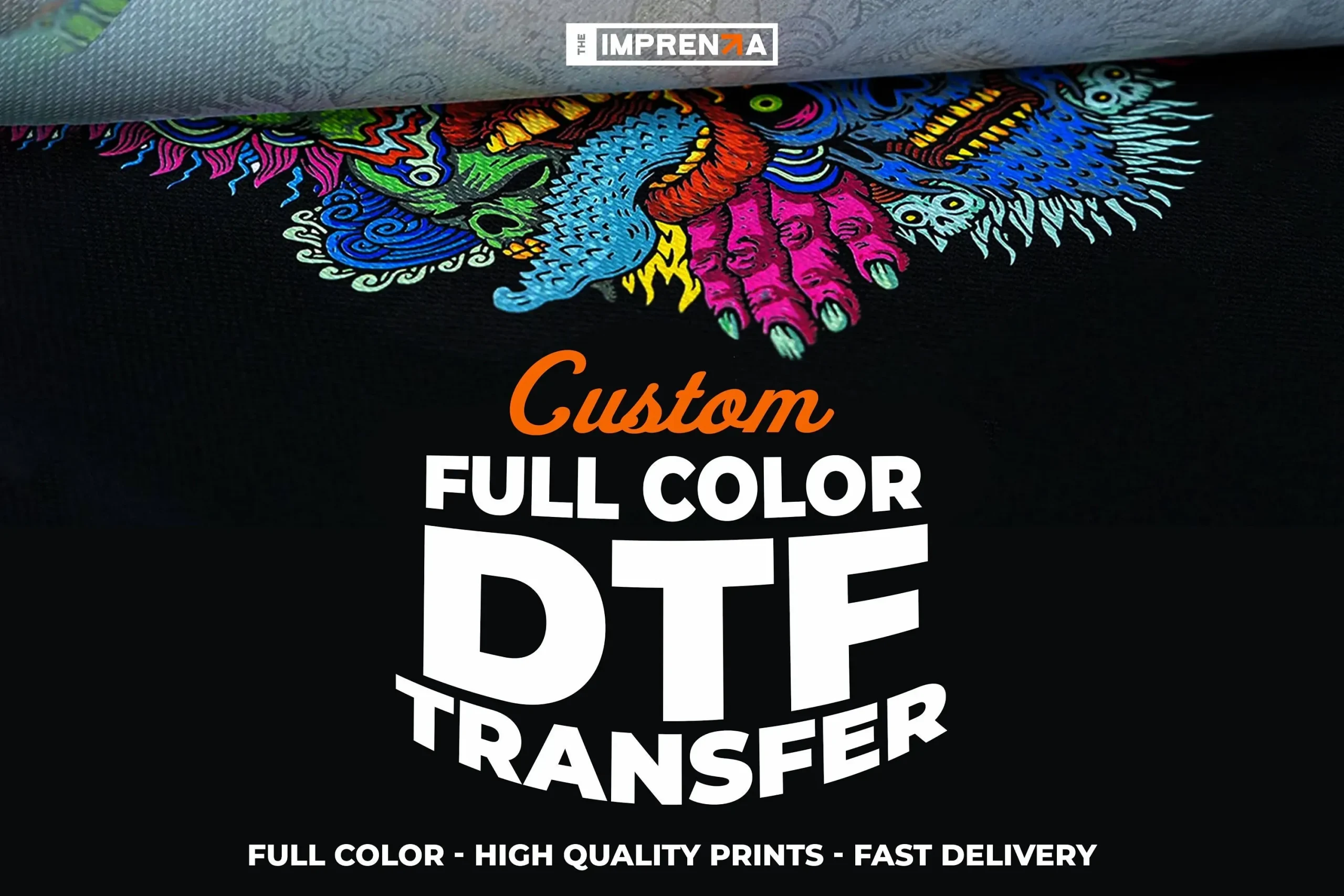DTF transfers, or Direct-to-Film transfers, are transforming the landscape of custom apparel printing by delivering exceptional print quality and design flexibility. As this innovative technique gains popularity, both professionals and hobbyists are eager to learn how to take full advantage of its capabilities. By mastering DTF transfer techniques, you can achieve vibrant colors, intricate patterns, and durable prints that stand the test of time. In this guide, we’ll delve into effective strategies for fabric preparation, printer optimization, and heat pressing that enhance the outcome of your DTF prints. Elevate your creations with insights that not only improve your skillset but also align with the demands of the modern printing marketplace.
Direct-to-Film (DTF) printing has become a go-to method for those looking to create high-quality transfer designs for various fabrics. Often referred to as film transfer printing, this modern approach allows for the application of vivid colors and intricate designs, making it particularly suitable for custom garment creation. By understanding the nuances of this technique, including proper fabric treatment and heat application, you can ensure that your prints not only have great aesthetic appeal but also long-lasting durability. This article will explore the best practices and methods that can help you maximize the quality of your film-based transfers. Engage with innovative tips tailored to help you navigate the world of fabric printing effectively.
The Importance of Quality Materials in DTF Printing
The success of DTF transfers greatly depends on the quality of materials used. When selecting DTF film, choose reputable brands known for their durability and compatibility with various printers. High-quality inks are imperative, as they determine the vibrancy and longevity of your prints. Investing in top-notch materials ensures that the colors remain vivid, and the designs maintain their integrity through multiple washes.
Additionally, using premium transfer powders can enhance the bonding between the ink and fabric, resulting in robust prints that resist fading. Whether you’re producing t-shirts or custom apparel, the importance of using quality materials cannot be overstated, as they form the foundation for exceptional print quality.
Optimizing Printer Settings for Stunning DTF Transfers
Printer settings are crucial for achieving optimal print quality with DTF transfers. Higher resolution settings produce sharper images, while accurate color profiles ensure that the colors match your design intentions. It’s advisable to experiment with different settings to find the optimal configuration for your specific printer and ink combination.
Moreover, maintaining consistent ink densities is essential for uniformity across all prints. Regular calibration of your printer can help avoid discrepancies in color and quality, ensuring that every transfer adheres to the high standards you set for your work.
Fabric Preparation: A Key Step for Successful Transfers
Preparing the fabric before applying DTF transfers is a vital aspect that can significantly affect the print outcome. Begin with a thorough cleaning process to eliminate any dirt, oils, or residues that may hinder ink adhesion. Using a lint roller can also help in removing any stray fibers that might impact the smooth application of the transfer.
Once clean, consider applying a specialized pre-treatment solution that enhances adhesion. This step is particularly important for synthetic fabrics, which can sometimes be less receptive to ink. Proper fabric preparation lays the groundwork for durable and high-quality DTF transfers that last.
Mastering Heat Press Techniques for Optimal Results
The heat pressing stage is where many of the major factors come into play, culminating in the final quality of a DTF transfer. It’s essential to set the heat press to the correctly specified temperature, typically between 320°F to 350°F, ensuring that this is monitored closely throughout the process.
Moreover, applying the right amount of pressure and timing is equally crucial. Too little pressure can result in insufficient adhesion, while excessive pressure can damage the design or fabric. Understanding and mastering these variables will lead to consistent and high-quality results that meet your clients’ expectations.
Post-Transfer Care: Ensuring Longevity of DTF Prints
The care taken after completing DTF transfers can drastically affect their longevity and overall quality. Allowing your prints to cure adequately is vital; this time gives the ink and fabric bond a chance to solidify thoroughly.
After curing, it’s advisable to avoid exposing new prints to harsh conditions, such as high heat in dryers or aggressive washing. Instead, opt for gentle washing methods and avoid bleach or fabric softeners in the initial washes to help maintain the vibrancy of the colors and the integrity of the design.
The Value of Experimentation in DTF Transfer Techniques
Experimentation is a powerful tool in mastering DTF transfers. By testing various combinations of inks, films, and fabrics, you can discover unique workflows and aesthetics that set your work apart from others in the industry. Every fabric behaves differently with specific inks, and hands-on experimentation can lead to innovative techniques that optimize print quality.
Additionally, conducting controlled tests can provide insights into how different materials react under heat and pressure, guiding you toward the best combinations for your artistic vision. Embrace this experimental mindset as it plays a crucial role in maximizing the quality of your DTF transfers.
Frequently Asked Questions
What are DTF Transfers and how do they work?
DTF Transfers, or Direct-to-Film transfers, involve printing designs onto a special film before transferring them onto fabrics using heat and pressure. This method allows for vibrant colors and intricate details, making it a popular choice for custom apparel.
How can I improve the print quality of my DTF Transfers?
To enhance print quality in DTF transfers, invest in high-quality films and inks, optimize printer settings, and ensure precise fabric preparation. Proper heat pressing is also crucial for achieving sharp and vivid prints.
What are the best DTF transfer techniques for beginners?
Beginners should focus on mastering fabric preparation, adopting correct printer settings, and understanding heat pressing requirements. Additionally, experimenting with various materials can help identify effective DTF transfer techniques.
How important is fabric preparation for DTF printing?
Fabric preparation is essential for optimal DTF printing. Ensure fabrics are clean and consider using pre-treatment solutions to improve ink adhesion, which leads to more durable and high-quality prints.
What factors should I consider when heat pressing DTF Transfers?
When heat pressing DTF transfers, consider the temperature (between 320°F to 350°F), pressure, and pressing time (around 10-15 seconds). Proper settings ensure excellent adhesion and print quality.
How can I ensure longevity and durability of my DTF Transfers?
To ensure the longevity of DTF transfers, allow adequate curing time after application, and avoid harsh washing and drying conditions initially. This care enhances the bond between ink and fabric, ensuring long-lasting quality.
| Key Points | Details |
|---|---|
| Understanding DTF Transfers | DTF printing transfers designs onto fabric using a special film and heat, allowing for vibrant and intricate designs. |
| Quality of Materials | Use high-quality DTF film and inks from reliable brands like Glitter HTV and Avery Dennison for better clarity and vibrancy. |
| Proper Printer Settings | Optimize printer settings for resolution, color profile, and ink density to enhance output quality. Regular calibration is crucial. |
| Pre-treating the Fabric | Ensure fabric is clean and consider applying a pre-treatment solution for better ink adhesion. |
| Heat Pressing Techniques | Master the heat press process by adhering to the recommended temperature (320°F to 350°F) and pressing time (10-15 seconds). |
| Post-Transfer Care | Allow adequate curing time post-transfer and avoid harsh conditions to enhance durability. |
| Experimentation | Regular testing of different materials and techniques can yield innovative DTF results. |
| Stay Updated with Trends | Follow industry trends and innovations to continually improve your DTF transfer techniques. |
Summary
DTF Transfers are a modern printing technique that can significantly enhance the quality of your apparel designs. By following the outlined best practices—such as using high-quality materials, optimizing printer settings, preparing your fabrics properly, mastering heat pressing techniques, and caring for your transfers post-application—you can achieve stunning results that resonate with both creativity and durability. It’s crucial to remain engaged with the latest industry trends and advancements, allowing you to refine your processes and output consistently. As you implement these strategies, your DTF Transfers will not only meet the highest standards but also help elevate your business in a competitive market.






